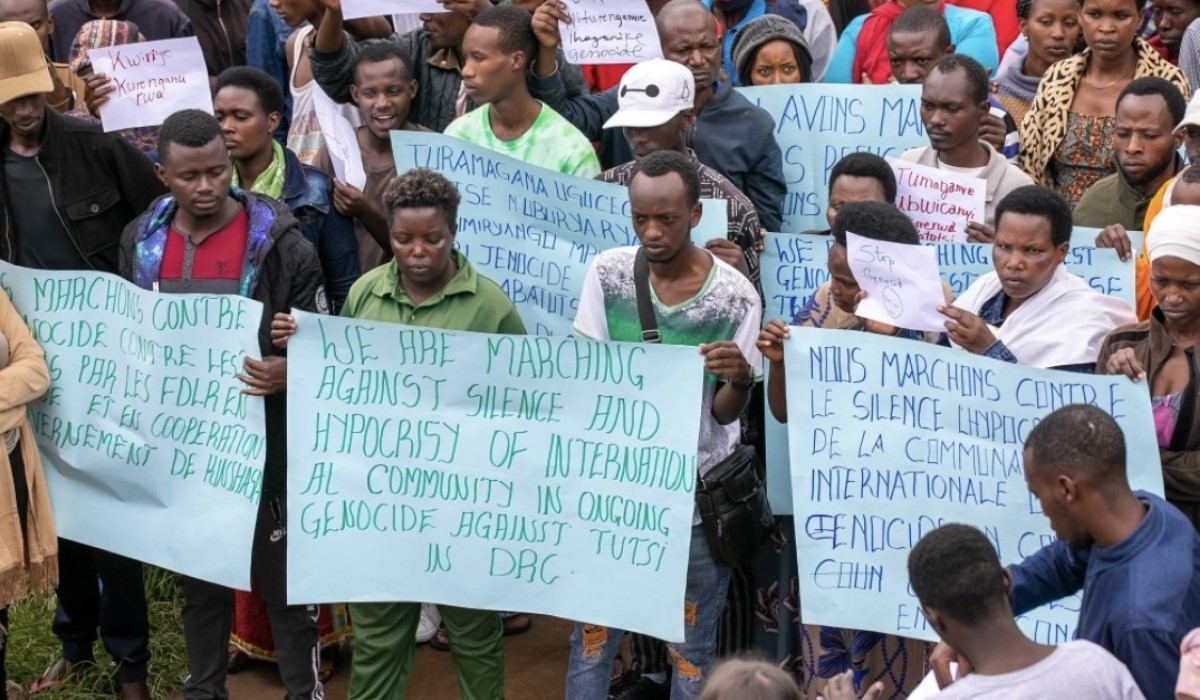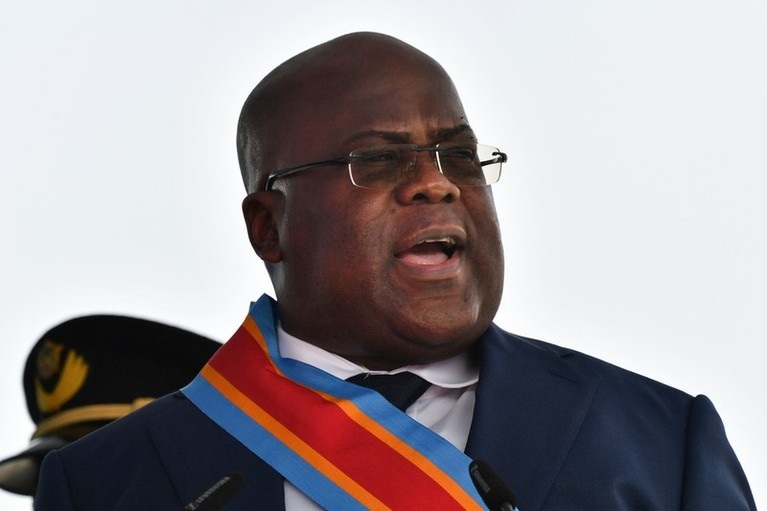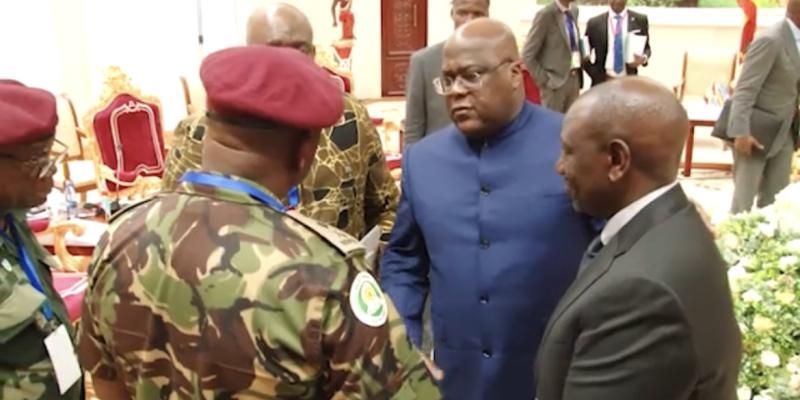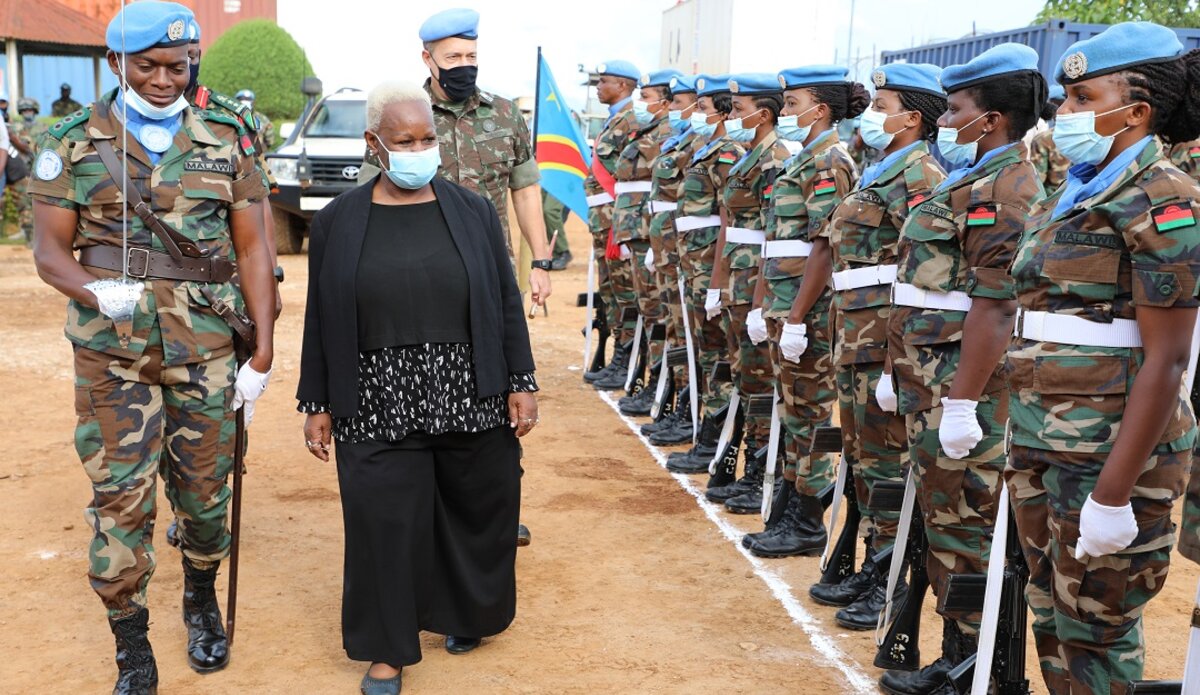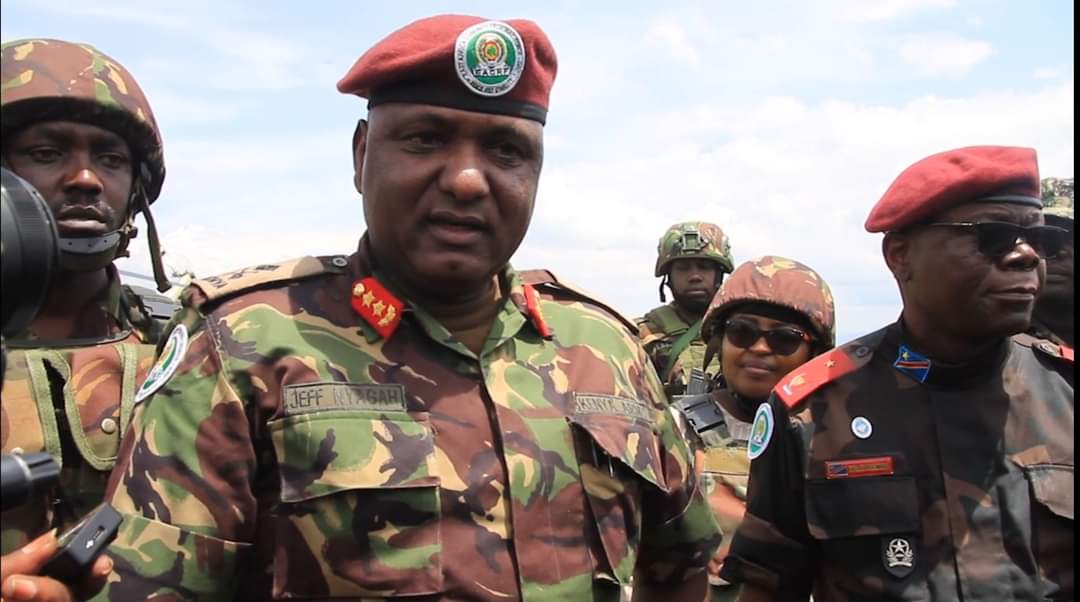Regional
Why massacres escalate in DRC despite EACRF successes

The East African Community issued a statement on May 1,
2023, indicating that its Regional Force (EACRF) deployed in eastern DRC has
registered tremendous success in ensuring the observance of ceasefire,
overseeing the withdrawal of armed groups, and handing over the previously
occupied territories to the regional force.
Areas formerly held by the M23 rebels such as Karuba,
Mushaki, Kiloriwe, Kitchanga, Mweso, Kishishe, Bambo, Bunagana, Tchengerero,
Kiwanja and Kinyandoni were under the control of EACRF. These areas were
secured without fighting. The M23 rebels had willingly withdrawn from occupied
territories as per the Luanda agreement.
When Kenyan President William Ruto visited Rwanda in
early April 2023, he was in agreement with his Rwandan counterpart that the
regional force was doing a good job in returning normalcy to eastern DRC.
However, Kinshasa is not of the same view. In fact, DRC
President, Felix Antoine Tshisekedi, has been at the center of inciting the
Congolese masses against the EACRF.
Besides, the more EACRF records success in areas it
controls there are increasing massacres in several other areas being orchestrated
by armed groups that formed alliances with the DRC national army (FARDC).
The UN Group of Experts report released in 2022 indicated
that the resurgence of the M23 prompted armed groups active in North Kivu to
shift alliances, and created new dynamics between these armed groups and FARDC.
Among those armed groups is the FDLR and CODECO among many others. The alliance
was confirmed by several reports from Human Rights Watch.
In the first two weeks of April 2023, the CODECO-FARDC
alliance raided three villages in Ituri region and, according to the UN Office
for the Coordination of Humanitarian Affairs (OCHA), the attacks left 150
people brutally massacred.
Killings are escalating on a high rate. As a result, MPs from Ituri issued a statement
on April 24, blaming FARDC to have deployed soldiers from Bunia barracks to
massacre civilians and create a climate of fear, which indeed they did.
In Beni, civil society president Tedy Kataliko said that
they have recorded over 500 people killed with axes, machetes, hammers in the
recent past.
It is not accidental that these killings are escalating
at the time EACRF announced progress and being commended by regional Heads of
State.
It is a deliberate act by the Congolese government to
discredit EACRF, brand it inept as President Felix Tshisekedi wants it, for not
fighting M23 rebels.
It so happens that in early January 2023, Goma town was
stormed by demonstrators protesting against the regional force. Tshisekedi’s
hired mercenaries had set base in Goma. Before the January protests started,
DRC army Chief of Staff, Gen Christian Tshiwewe, and the military governor of
North Kivu province, Lt Gen Constant Ndima Kongba, held meetings with civil
society and opinion leaders, and mobilized
the violent demonstrations.
A few days later, in early February, Burundian President,
Evariste Ndayishimiye, who is also the chair of the East Africa Community,
called for an extraordinary summit regarding the then-escalating security
concerns in eastern DRC.
Right after the meeting, an angry Tshisekedi attacked the
Kenyan commander, telling him to not favour the M23 but rather fight them or
risk facing the wrath of the population.
“Do not favour the M23. It would be a shame if the
population were to attack you. You came to help us solve a problem, not to be
part of it. Pay attention to this, communicate with the population,” Tshisekedi
told a calm looking Gen Nyagah.
Just hours after the meeting in Bujumbura, which called
for a ceasefire and dialogue between the DRC government and armed groups, protests
intensified in Goma, where demonstrators were targeting the regional force and
the United Nations Peacekeeping Force (MONUSCO), accusing them of failing to
restore peace.
Chaos erupted as protesters ransacked Goma town, blocking
roads and looting shops while young people attempted to march toward the
Rwanda-DRC border. It is obvious the protests were linked to President
Tshisekedi’s rhetoric on the regional force.
However, in a systematically orchestrated plan,
Tshisekedi, later on, formed an armed group called Wazalendo or the reservists,
where new armed groups were formed. They went on rampage killing just like
other armed groups that have formed alliances with FARDC.
It is part of Tshisekedi’s grand plan to sustain violence.
As reported earlier Tshisekedi
would do anything to postpone the election.
Frustrating EACRF, and creation of armed groups working
as his killing machines, are all fitting within his grand plan of saying that
elections will not happen when there is a part of the country that is at war,
or in conflict hence a reason to postpone and overstay in office.
Tshisekedi knows he has nothing to show as an achievement
in the presidential campaigns.
The best he can give Congolese voters now is hate speech
against Congolese Rwandophones, and Rwanda, the supposed root cause of his
country’s ills. What is sad, however, is that some choose to believe his lies.


.jpeg-20221214055432000000.jpeg)
